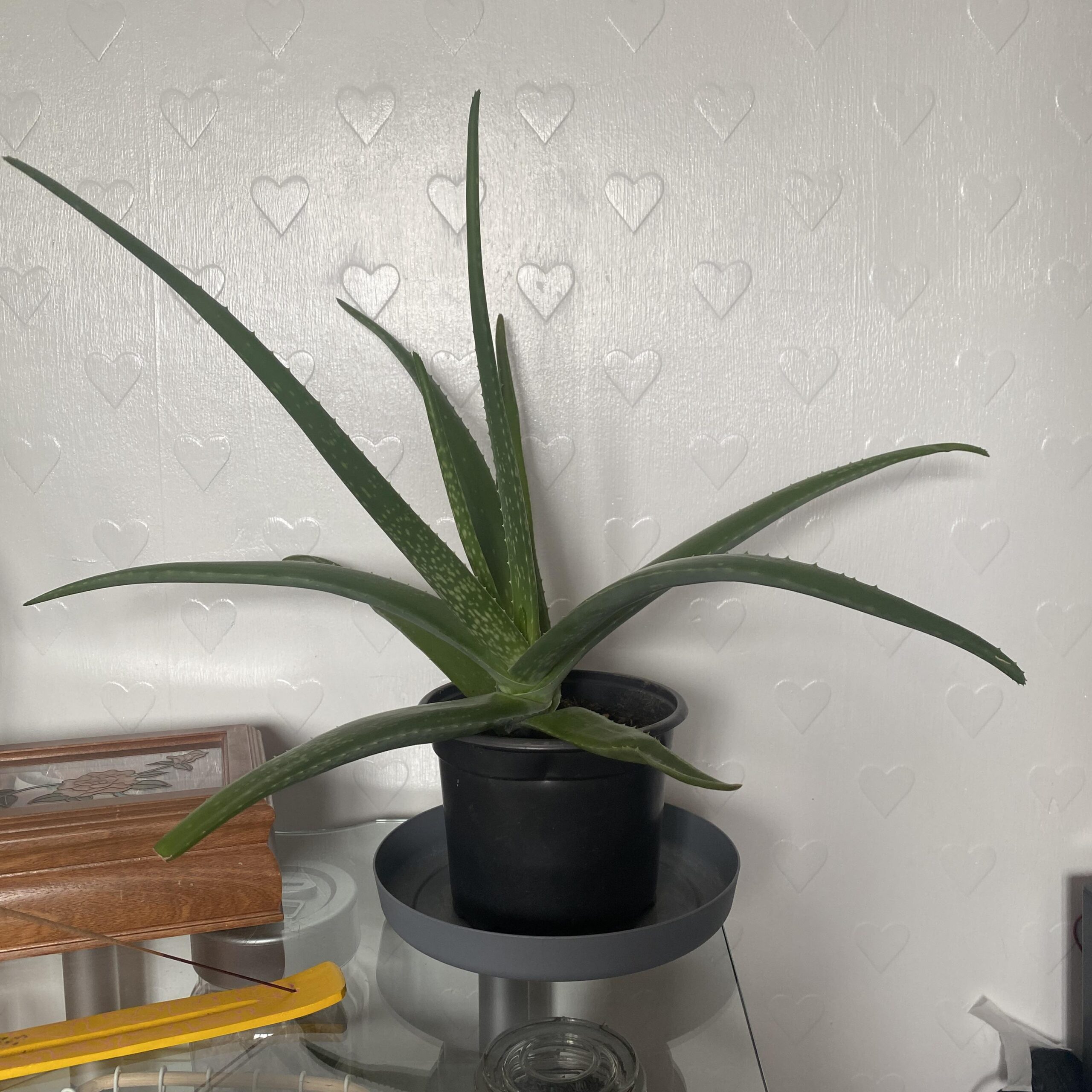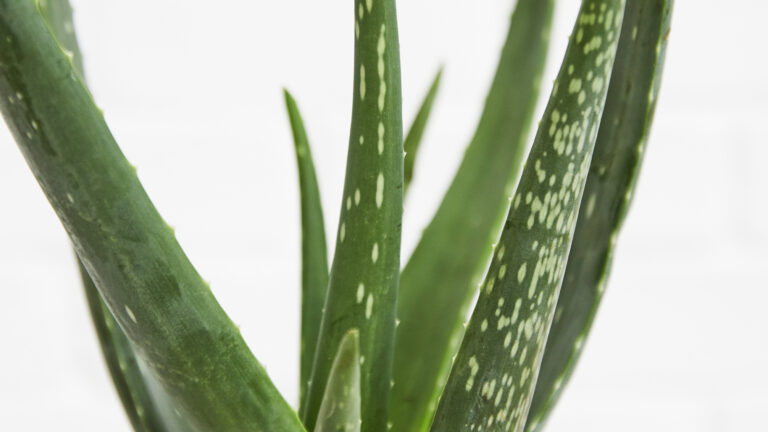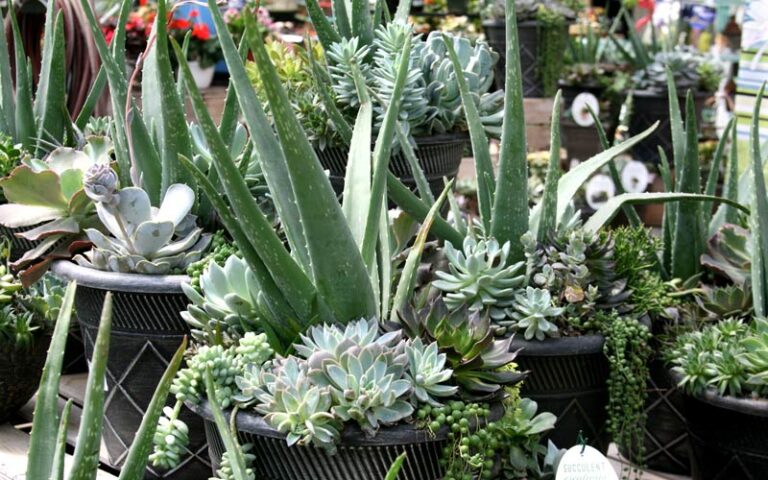Aloe Vera Plant Growth Issues
Aloe vera plants are known for their hardiness, but they can still encounter growth issues. Understanding the sunlight requirements, proper watering techniques, and soil and drainage needs is essential for maintaining healthy plants.
Sunlight Requirements
Sunlight is a crucial factor in aloe vera plant health. Aloe vera thrives in a location with bright, indirect sunlight. When deprived of light, the plant undergoes a process called etiolation, where the leaves stretch out in search of higher light levels.
- Bright, indirect sunlight: Keeps the plant compact and sturdy.
- Avoid direct sunlight: Prevents leaf scorch and sunburn (Epic Gardening).
A sunny windowsill is ideal, but avoid overly shady spots. If the plant exhibits elongated leaves, relocate it to a brighter area. For additional information, you can visit our page on aloe vera plant sunlight.
Watering Mistakes
Watering aloe vera incorrectly can severely affect its growth. Both underwatering and overwatering can cause noticeable distress to your plant.
-
Underwatering: Can result in leathery, wrinkled leaves that appear dull and shriveled. To address this, water thoroughly until water flows through the pot’s bottom holes. Loosening the topsoil helps with water absorption.
-
Overwatering: Common symptoms include brown, papery leaf tips and low humidity. Brown tips often start from the leaf’s farthest point. Pruning the tips won’t promote new growth (Epic Gardening).
Proper balance is key. To learn more, visit our guide on aloe vera plant drooping.
Soil and Drainage Concerns
The soil quality and drainage capabilities are paramount to the well-being of your aloe vera plant.
-
Well-draining, sandy soil: Ensures proper air circulation and prevents root rot. A soil mix containing sand, perlite, or pumice is preferred.
-
Cactus potting mix or succulent soil blends: These soil types are ideal. Avoid using moisture-retentive soils that can lead to excess moisture and root suffocation (A Garden Diary).
Repotting every couple of years with fresh, well-draining soil ensures the roots remain healthy and promotes overall plant wellness. For more details, check out aloe vera plant potting soil.
Quick Reference Tables
Sunlight Exposure
| Sunlight Type | Result |
|---|---|
| Bright indirect | Healthy, compact growth |
| Direct sunlight | Leaf scorch, sunburn |
| Low light | Leaves elongate (etiolation) |
Watering Effects
| Watering Issue | Result |
|---|---|
| Underwatering | Wrinkled, dull leaves |
| Overwatering | Brown, papery leaf tips, potential root rot |
Understanding and addressing these core issues will help you maintain a healthy, thriving aloe vera plant. For more detailed plant care tips, visit our page on aloe vera plant care.
Troubleshooting Aloe Vera Plant
When your aloe vera plant is not growing as expected, it can be frustrating. Understanding common issues and how to address them is key to reviving your plant.
Etiolation and Light Exposure
Etiolation in aloe vera occurs when the plant does not receive enough light. The leaves stretch out in search of light, resulting in longer, thinner, and less vibrant growth. Aloe vera thrives in bright, indirect sunlight and should be moved to a brighter spot for better growth. However, avoid direct sunlight to prevent leaf scorch (Epic Gardening). For more details, visit our article on aloe vera plant light requirements.
| Light Condition | Effect on Aloe Vera Plant |
|---|---|
| Bright, indirect sunlight | Healthy, compact growth |
| Low light | Etiolation, elongated leaves |
| Direct sunlight | Scorching, brown tips |
Signs of Overwatering
Overwatering is a common issue that can lead to various problems for your aloe vera plant. Signs of overwatering include soft and squishy stems that may collapse, indicating that the plant’s roots and stems are retaining too much water and starting to rot.
To avoid overwatering, allow the soil to dry out almost completely between watering sessions. Use a well-draining soil mix, such as a cactus potting mix or succulent soil blend with sand, perlite, or pumice (A Garden Diary). Repotting your aloe vera plant every couple of years with fresh, well-draining soil can also help improve drainage.
| Symptom | Likely Cause | Solution |
|---|---|---|
| Soft, squishy stems | Overwatering | Allow soil to dry out, use well-draining soil |
| Stem collapse | Overwatering | Adjust watering routine, ensure proper drainage |
Learn more about preventing overwatering in aloe vera plant overwatered.
Signs of Underwatering
Underwatering can leave your aloe vera plant looking wilted, with dry and shriveled leaves. It’s essential to water your aloe vera thoroughly but infrequently. The soil should be allowed to dry out partially, but not completely, between waterings. Ensure the water reaches all roots by watering thoroughly and waiting until the excess water drains out from the bottom of the pot.
| Symptom | Likely Cause | Solution |
|---|---|---|
| Wilted, dry leaves | Underwatering | Water thoroughly, allow partial drying of soil |
For additional care tips, refer to aloe vera plant care to ensure your aloe vera remains healthy and vibrant.
By understanding these common issues and applying the right solutions, you can troubleshoot your aloe vera plant and help it thrive.
Tips for Aloe Vera Plant Care
Understanding and applying proper care techniques for your aloe vera plant is crucial to avoid stagnation and promote healthy growth. Here are key tips in three important areas: watering techniques, soil mix and pH levels, and leaf and stem health.
Proper Watering Techniques
To prevent your aloe vera plant from stagnation, it’s vital to master proper watering techniques. Underwatering can cause aloe vera leaves to become leathery, tough, and shriveled. Thorough watering involves allowing water to flow through until it drains out of the pot bottom. Loosen the soil crust to ensure adequate water absorption.
On the other hand, excessive moisture can lead to root rot and plant decay. Using a well-draining soil mix and allowing the top inch or two of soil to dry out before watering is essential (A Garden Diary).
Suitable Soil Mix and pH Levels
Aloe vera plants flourish in well-draining, sandy soil that promotes proper air circulation around the roots. Soil retaining too much moisture leads to root rot, so it’s recommended to use cactus potting mix or succulent soil blends containing sand, perlite, or pumice.
Repotting every few years with fresh, well-draining soil supports healthy growth. Aloe vera also thrives in soil with a pH between 6.0 and 7.0. Regularly checking your soil’s pH can help you maintain an ideal environment for your plant.
| Soil Type | Characteristics | Suitable For Aloe Vera |
|---|---|---|
| Cactus Mix | Well-draining, sandy | ✔️ |
| Succulent Blend | Contains sand, perlite, pumice | ✔️ |
| Regular Potting Soil | Retains moisture | ❌ |
Understanding Leaf and Stem Health
To keep your aloe vera healthy, monitor the condition of its leaves and stems. Overwatering causes overly squishy leaves that fall apart when touched due to burst cells (Epic Gardening). If this occurs, remove the plant from its container, trim the damaged roots, and replant it in fresh cactus potting mix.
Stem collapse is another sign of overwatering, resulting in soft stems unable to support leaf weight (Epic Gardening). Preventing stem collapse is possible by ensuring proper watering practices and avoiding excess moisture. For more on aloe vera plant care and common issues, check our detailed guide on aloe vera plant care.
By implementing these care tips, you can ensure your aloe vera plant remains healthy and continues to thrive. For more plant care tips, visit our articles on aloe vera plant flower and aloe vera plant propagation.
Maintenance and Recovery
Proper maintenance and recovery techniques can rejuvenate a stagnant aloe vera plant and encourage healthy growth.
Repotting Guidelines
Repotting your aloe vera plant provides necessary nutrients and ensures proper drainage to prevent root rot. Signs that it’s time to repot include roots growing out of the pot or an overcrowded appearance. It’s essential to use a cactus or succulent soil mix when repotting, as this type of soil is well-draining and prevents water from sitting at the roots.
| Requirements for Successful Repotting | Details |
|---|---|
| Frequency | Every 1-2 years |
| Soil Type | Cactus or succulent mix |
| Pot Type | With drainage holes |
Preventing Common Mistakes
To avoid common mistakes, it is crucial to understand that aloe vera plants thrive under conditions similar to cacti. They need bright but indirect sunlight, a light soil mix, and a pot that allows excess water to drain, preventing the plant from sitting in water, which can lead to issues such as overwatering or underwatering (Quora).
- Ensure bright but not direct light.
- Use a well-draining potting mix, preferably a blend of cactus soil and perlite.
- Keep the pot in an area with good ventilation to mimic the natural conditions of aloe vera’s native habitat.
Providing Optimal Growing Conditions
For optimal growth, make sure the soil dries out almost completely before watering your aloe vera plant again. Checking the entire pot for moisture rather than just the surface can provide a more accurate measure of the plant’s needs.
| Optimal Growing Conditions | Parameters |
|---|---|
| Sunlight | Bright, indirect light; avoid direct sun |
| Watering | Allow soil to dry out between waterings |
| Soil | Well-draining (cactus or succulent mix) |
By following these guidelines, your aloe vera plant can recover from stagnation and thrive, ensuring healthy and vibrant growth. For more detailed care tips, visit our comprehensive guide on aloe vera plant care.




